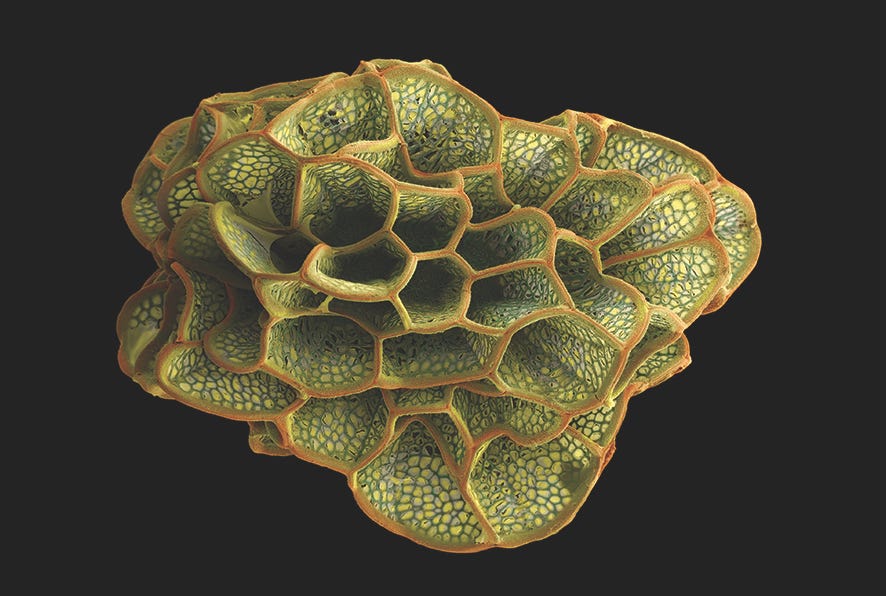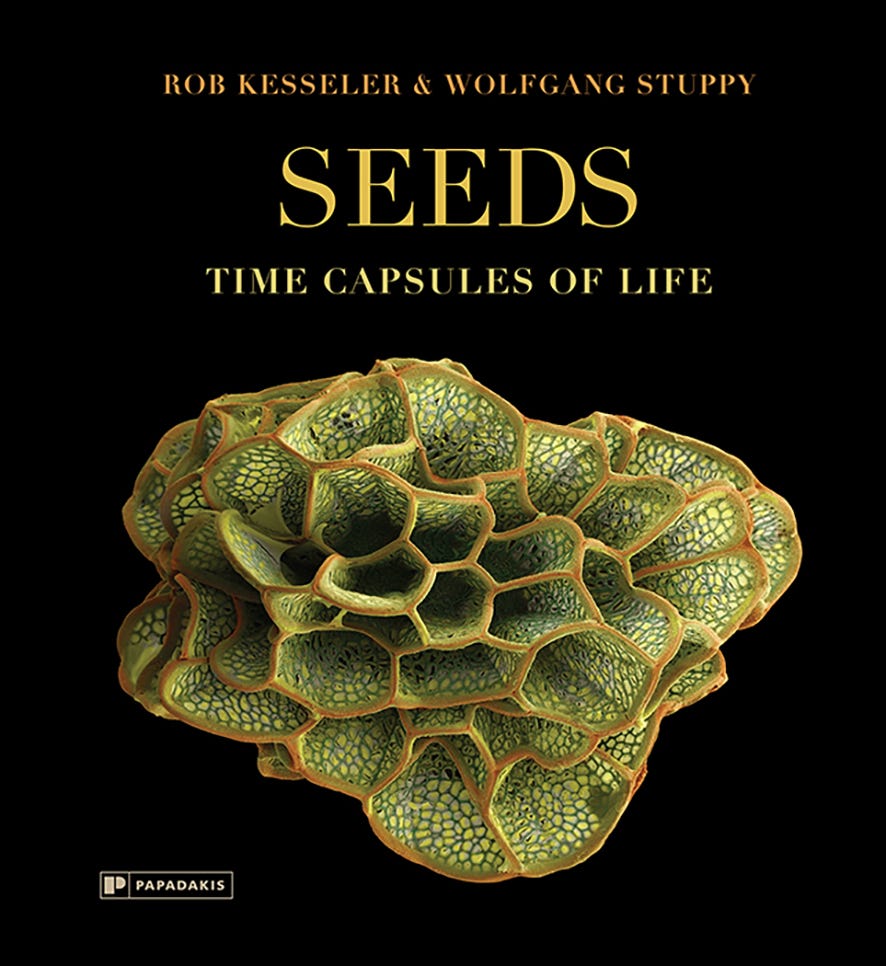Internationally recognized seed specialist, Wolfgang Stuppy teamed up with Rob Kesseler, award-winning visual artist and Emeritus Professor of Art, Design & Science at Central Saint Martins, University of the Arts London, to present a unique and highly unusual natural history of seeds. Tree Talk is delighted to share a guest post by Wolfgang to coincide with the publication of Seeds - Time Capsules of Life.
Join Wolfgang, Rob and The Tree Council CEO, Sara Lom for an in conversation free, online talk as part of Seed Gathering Season, from 1-2pm on Wednesday October 2.

Why so many different seeds?
Seeds come in myriad shapes, sizes and textures, all the result of millions of years of evolution to ensure the survival of their species. Few are aware of the pivotal role of seeds in the life cycle of a plant. Seeds carry with them the next generation of their species in the form of a baby plant, the embryo. As a consequence, the destiny of a plant's succeeding generation hinges on the success or failure of its seeds. If a seed fails to germinate and grow into a new plant, its mission has failed. The chances of success are improved if seeds manage to reduce competition by getting away from each other and from the mother plant. It is therefore not surprising that plants have evolved a great diversity of dispersal strategies which enable their seeds to travel, be it through explosive mechanisms, by wind, water or with animals. Much of the structural diversity of seeds reflects the different adaptations to dispersal.
A journey into a secret microcosm
My new book, Seeds – Time Capsules of Life, in collaboration with artist Rob Kesseler, takes us on a fascinating journey into the microcosm of seeds, where art and science merge to reveal one of nature's most beautiful secrets. We wanted to present a richly illustrated and scientifically sound natural history of seeds featuring unique hand-coloured scanning electron micrographs that show seeds as few people have seen them before. Drawing from the vast international collections of Kew’s Millennium Seed Bank in Sussex, we had a unique opportunity to provide a comprehensive overview of seed diversity on our planet, from the seeds of tiny herbs to those of towering trees.

As an artist, Rob Kesseler is motivated to reveal and share things in nature too small to be seen by the naked eye. Things of exquisite beauty, of astonishing structural diversity, with miraculous strategies to disperse their pollen and seeds to ensure germination and propagation. He does this by introducing colour to the black and white microscopic images to capture the eye and imagination of the viewer, colour that is locked within the DNA of the plants and colour which expresses his artistic vision.
Masterpieces of evolution
Intriguingly, the smaller the seeds, the more extraordinary are their shapes and surface patterns! For example, in the hemiparasitic broomrape family (Orobanchaceae), seeds are produced in enormous quantities to increase the probability of encountering a suitable host. These seeds are characterized by their minute size and ultra-lightweight, honeycomb-like seed coats, which create a high volume-to-weight ratio, allowing them to remain airborne and disperse over long distances by wind – true masterpieces of natural engineering!
Animals as couriers
Not less fascinating are the adaptations related to animal-dispersal. Some fruits and seeds are equipped with hooks or barbed spines that latch onto fur or feathers, hitching a ride to new locations. Others entice animals with edible rewards, encouraging them to transport seeds by carrying them away or swallowing them. Perfectly adapted to pass through the digestive systems of animals unharmed, these seeds are eventually deposited far from the mother plant, along with some fertilizer. This intricate interdependent relationship between plants and animals, shaped over millions of years of coevolution, is highly susceptible to disruption if one of the two partners suffers decline.
Small but indispensable
The ongoing biodiversity crisis highlights the urgency of protecting wild species together with their natural habitats. Every species represents not just an individual organism, but an entire web of delicate ecological relationships, interactions and interdependencies. Each seed is a fundamental part of this web of life – small and seemingly insignificant, yet indispensable.
The beauty of seeds
Beyond their biological importance, seeds also possess a unique aesthetic quality that has captured the imagination of artists and naturalists for centuries. Rob and I wanted to reveal the quiet, hidden beauty, and biological significance of seeds.
At its heart, Seeds – Time Capsules of Life is a tribute to Kew’s Millennium Seed Bank, a global sanctuary preserving seeds to protect plant species from extinction. Much like plants employ diverse strategies to disperse their seeds, Rob Kesseler’s striking, vibrant micrographs and my expert botanical insights seek to “spread” awareness of the remarkable beauty of seeds and the vital importance of conserving them for future generations.
Whether through its scientific insights or the power of its images, this book will change your perception of seeds forever!
Dr Wolfgang Stuppy is currently Scientific Curator of the Botanic Garden at Ruhr-Universität Bochum, Germany
Seeds: Time Capsules of Life, with Rob Kesseler and Dr Wolfgang Stuppy free, online talk takes place from 1-2pm on Wednesday October 2. Book your spot here.







